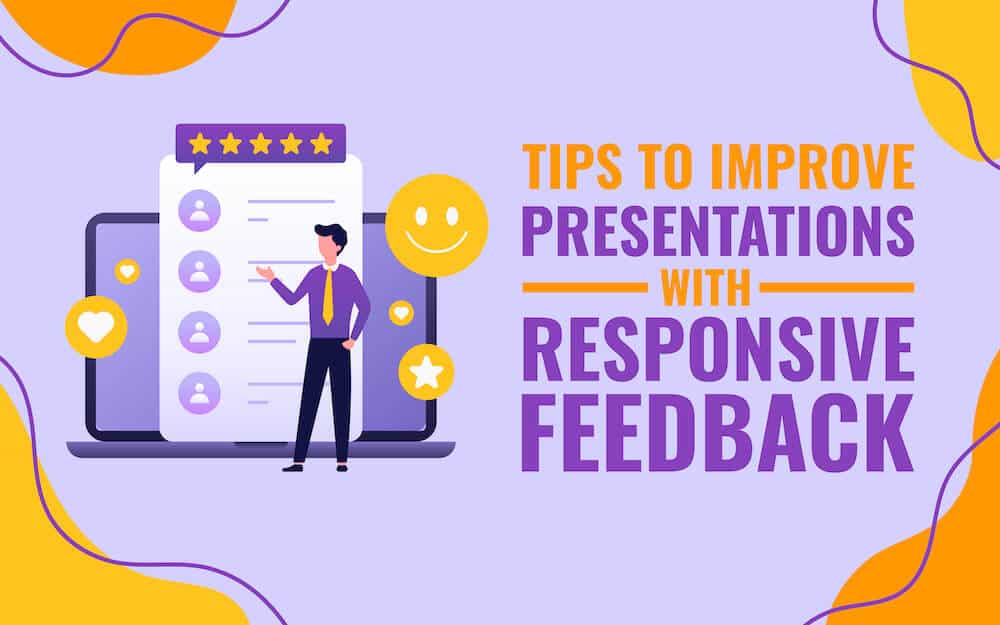
If you’ve ever been in the audience of an academic presentation, you know that many, if not most, are a bit… well, dull. And when an audience is bored, they tend to forget everything the presenter has said.
To ensure this doesn’t happen to you, here are 8 tips to help you make your academic presentation memorable.
1. Understand the Goal of Your Presentation
In order to structure your presentation correctly it’s important that you understand the overall goal of the presentation. For academic presentations, there are actually 2 potential goals presenters might have:
- Inspire the audience to WANT to read your paper. Most conferences give speakers just 10 minutes to present. Reading your paper will most likely take closer to 30 minutes. So the goal here is to cover just enough to entice your listeners to want to read your paper. Treat your presentation a bit like a movie trailer – it’s a tease of what’s to come.
- Make connections with others in your field of study. If your goal is to have something to discuss with audience members after your presentation as a way to make introductions, then you’ll want to emphasize the kind of feedback you want. You may want to ask the audience what you should do next or what might explain the results that you got. In this way, you are inviting the audience to find you after the presentation to continue the discussion.
2. Keep Your Data Current
There can be a lot of lag time between when a paper is submitted and when you present it at conference. Sometimes 6 to 12 months may pass by in the interim. You will most likely have done more work and research during that time.
Some of the best and most memorable presentations are the ones where the presenter shares new data that has been discovered since their paper’s publishing. So don’t think you have to stick to what your paper shares. The idea here is to share real value with the audience.
3. Use a Proven Framework
When you’re just getting started, it’s important to use a framework that can guide you on the creation and development of your presentation. While each presentation might deviate slightly based on a specific field, they all tend to follow the same framework, which looks something like this:
- Introduction/Overview/Hook
- Theoretical Framework/Research Question
- Methodology/Case Selection
- Background/Literature Review
- Discussion of Data/Results
- Analysis
- Conclusion
When you become better at giving these academic presentations, you can feel free to play around with this structure. But for now, stick to it.
4. Practice
It’s important to be prepared for your presentation. Getting up there and winging it is a recipe for disaster. So make sure you take the time to practice. Ask friends, family and/or colleagues if they would listen and give feedback. If you can’t find anyone to help you, then record yourself giving your presentation and watch with your audience members’ point of view in mind.
Did you talk too fast? Were you looking down the entire time? Were you interested or bored in what you had to say?
Don’t feel the need or even attempt to memorize your presentation. You simply want to become very familiar with the flow and structure of what you’re going to say so it feels natural coming out of your mouth.
5. Stick to Your Time Limit
It’s important to develop your presentation with your allotted timeframe in mind. If you’ve only been given 10 minutes, then be sure your presentation isn’t 14 minutes or 6 minutes.
A good rule of thumb is that each typed, double-spaced page takes roughly 2 minutes to speak. So for a 10-minute talk, you should have no more than 5 double-spaced pages of material prepared.
6. Don’t Load Your Presentation Slides
Remember, your slides are there to supplement your presentation. Do not fill your slides with so much text that the audience spends your entire presentation reading your slides instead of listening to you.
Be sure to use images. Research suggests that images help with learning and memory, so if you want your presentation to be memorable, be sure to include images into your slides.
7. Don’t Read Your Own Slides
To keep your audience engaged, you want to consistently make eye contact with them throughout your presentation. You can’t do this if you are looking down at notes or up at your own slides. Again, you don’t have to memorize all of the exact words you are going to say, but KNOW what you want to say so you can speak and look out at your audience at the same time.
8. Be Open to Questions
There will most likely be a Q&A at the end of your presentation, and often this is where you can make the biggest impact on your audience. Don’t make the mistake of assuming a question is a challenge to you when it is just a question.
For instance, someone may ask, “Why did you use methodology A instead of B?” To your ear this may sound like they are saying “B” would have been the better choice. But what they are really doing is trying to learn more about what you were thinking and how you came to certain conclusions.
Giving academic presentations can be challenging and nerve-wracking. But if you follow these 8 tips, you will be able to give a memorable presentation every time.




Thank you so much! This worked well for me and now, I have a happy audience!